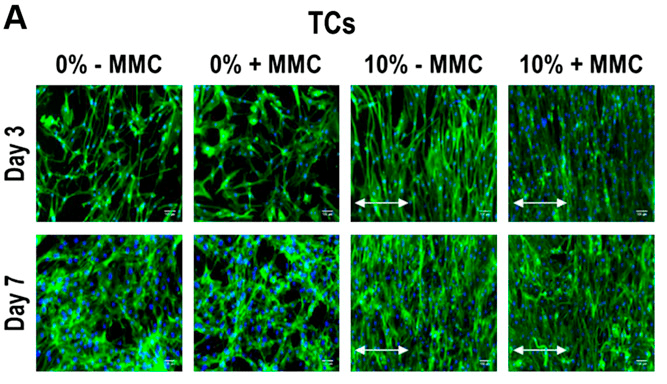Bottom-up bioengineering is an approach to build tissue structures using cell-laden modules (such as extracellular matrix) as opposed to seeding cells into porous scaffolds. It has a higher level of biomimicry and has been used successfully in clinical settings for skin, cornea and blood vessel tissues. However, existing methods require a long culture time to produce the implantable construct. This causes phenotypic drift and eventually the loss of cells’ therapeutic potential. Dr Dimitrios Zeugolis and his team at the National University of Ireland-Galway looked at using macromolecular crowding (MMC) and mechanical loading to optimize cell conditions and ECM deposition in the eventual goal of fabricating biomimetic tissue substitutes.
In their experiment, cultured cells in MMC medium underwent uniaxial stretching using the CellScale MechanoCulture T6. Mechanical stimulation is important for tissues to regain functional mechanical properties. Scaffolds and cell constructs in vitro have seen improved mechanical properties even after short-term stimulation. The team varied 4 different cell types: human adult tenocytes, human neonatal dermal fibroblasts, human adult dermal fibroblasts and human bone marrow stem cells.
Read the full journal article here: https://doi.org/10.1096/fj.201802451R
Read about Dr Zeugolis’s research here:https://www.nuigalway.ie/engineering-informatics/biomedical-engineering/research/researchtopics/drdimitrioszeugolis/
To read about an engineered meniscus developed from Middle East Technical University in Turkey, click here.








